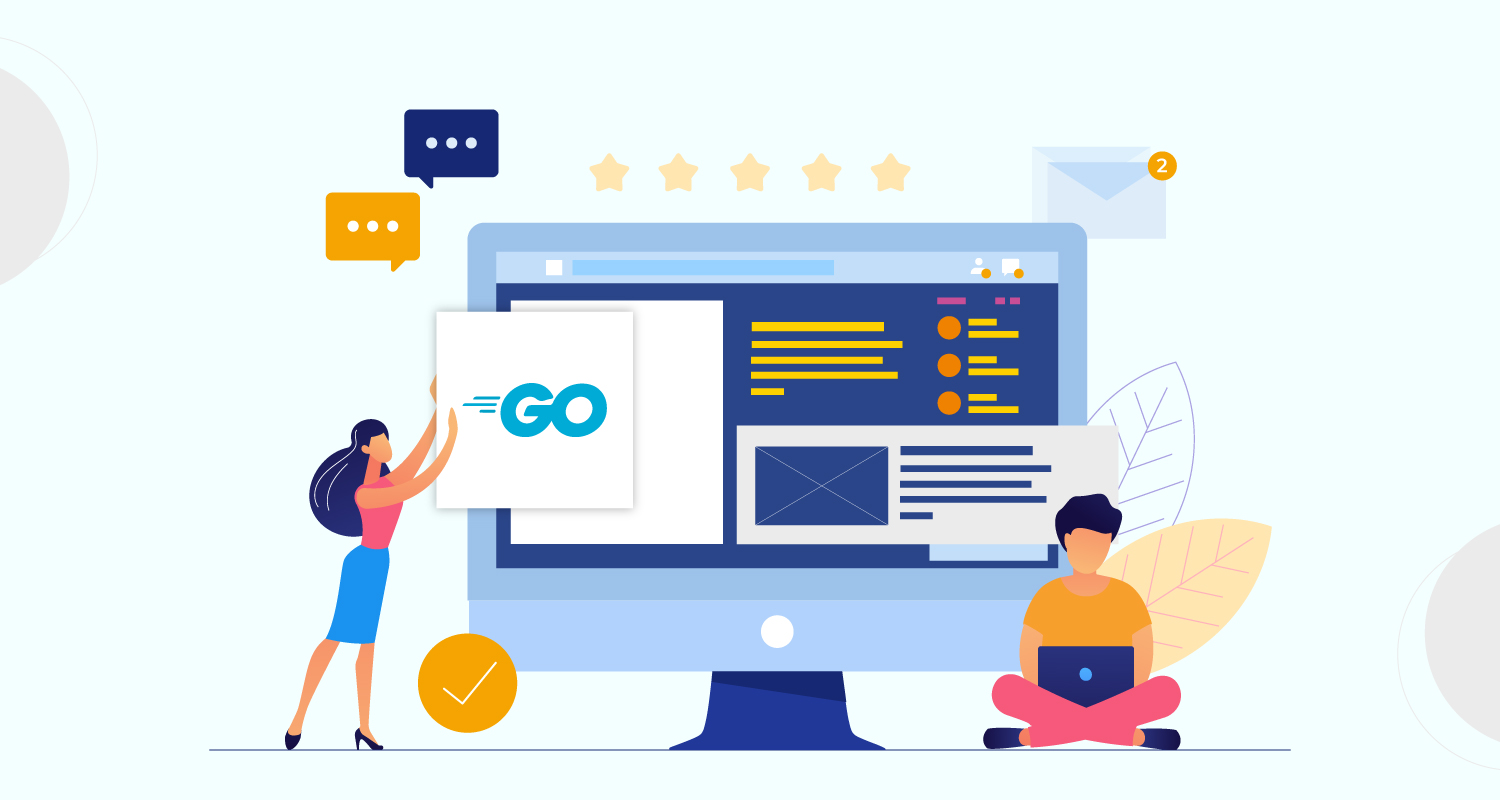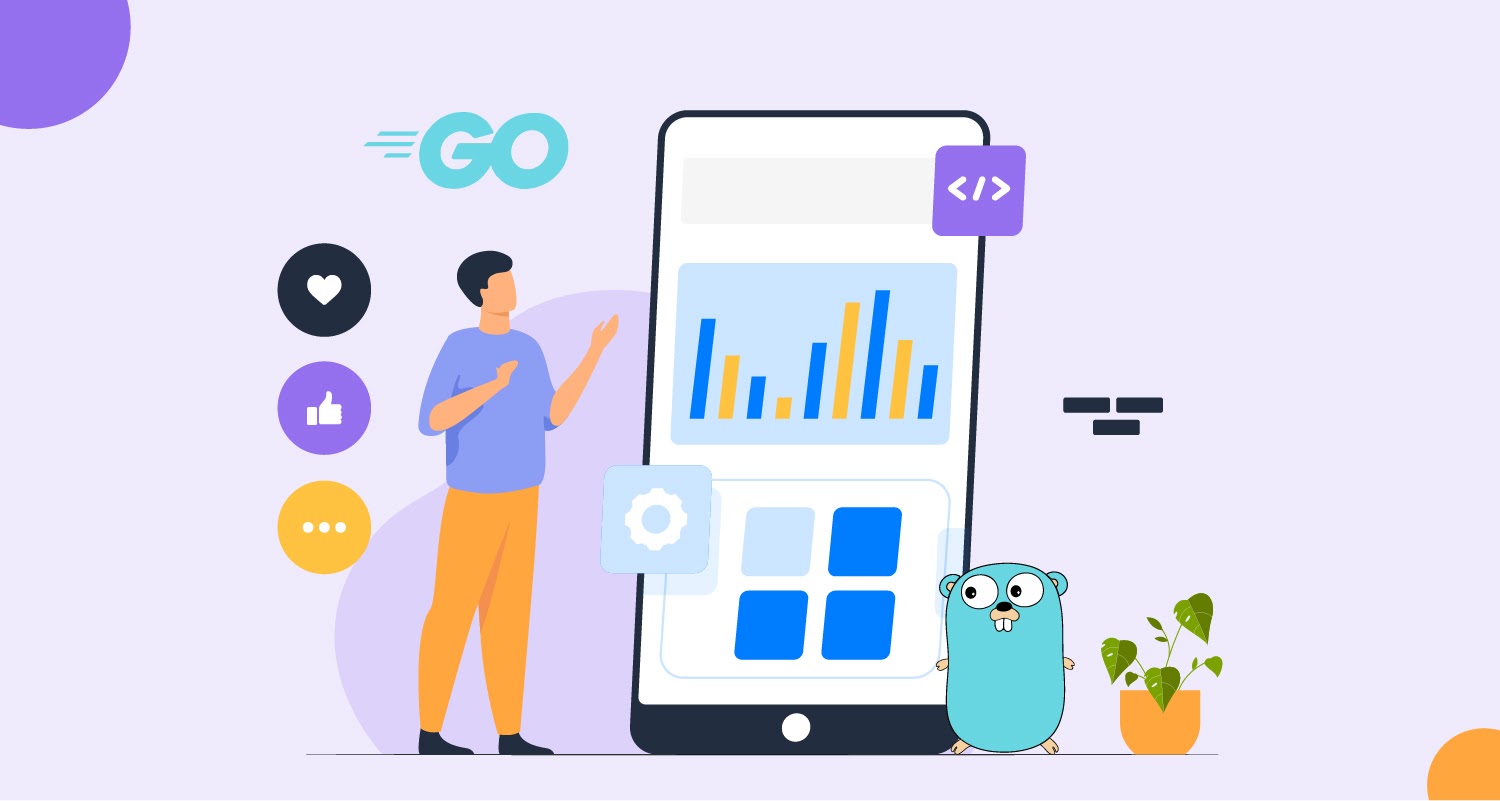With so many popular programming languages, it is nothing but confusing to transition to a new language without thinking. It can be frustrating and overwhelming, especially if you have no background in Hiring Front-End Developers.
Golang is a relatively new language but has quickly become a favorite of programmers. It is fast, secure, and easy to learn, making it a great language to transition into.
Golang is a programming language that has taken the world by storm. It has quickly become the language of choice for many tech giants and startups. Because of its compact size, speed, and high level of abstraction, Mobile app development company uses it to get their code running almost as fast as C/C++ code. The language has also become very popular with web developers and is an excellent choice for building web apps, web services, and server-side programs.
The advantages of using golang
Go is a programming language roughly as easy to use as C, but with better performance, simpler syntax, and a more straightforward and more flexible type system. The language is also much smaller than C, making it easier for newcomers to pick up and understand.
Go allows developers to separate their programs from the operating system and opens new possibilities for developing a full-stack framework, like Docker, that takes care of the operational details for you. In other words, it turns the VM into a fully-functioning application.
So, let’s have a look at some of the prominent advantages of using Golang.
- Speed- Golang is a compiled language, meaning that any code written within the language actively compiles into a format that the processor on the computer can understand. This gives developers the speed and efficiency of programming languages like Python but the flexibility of a language like JavaScript. It also has other advantages, including improved security, debugging, and performance for large-scale web applications.
- Easy to understand- Go is a language in which developers can write programs and make them easily portable to any machine, not just those with native Go compilers. Go is cross-platform, so developers can write their programs once and deploy them everywhere – on any operating system, no matter the background. This creates an easier transition and reduces the learning curve required to transition from programming in other languages to programming in Go.
- More stable- Golang is the programming language of choice for building high-performance, low-latency systems, has goroutines, which take up as little as 2kB of memory and enable the concurrent execution of essential functions. These functions can run independently, making it possible to build systems with multiple processes when needed. The significant advantage of goroutines over other concurrency mechanisms, such as threads or processes, is that they are lightweight. This means they use less memory, which results in better performance and lower latency.
- Massive community– Go is a language designed to be easy not only to use but to learn as well. Rather than reinventing the wheel, Go has borrowed many ideas from other languages and incorporated them into a new, exciting language. In short, Go is a new language that has been built from the ground up to be simple, clear, and easy to learn and use.
- Accessible development tools- Go is a programming language with some of the most popular tools, languages, and repositories in the entire ecosystem. The most popular tools are in the form of plugins, which can be easily added to your editor or IDE. Some popular plugins include gofmt, lint, test, and build plugins. Even with plugins, you can still use editors such as Sublime Text, Vim, and TextMate.
Golang has enjoyed a meteoric rise since being introduced two years ago. By the end of this year, official versions of Golang will be available for multiple modern operating systems: Linux, Mac, and Windows. Here in this post, we have brought you a quick look at golang frameworks 22 to build a scalable project.
1. Gin Gonic
Gin Gonic is one of the most popular and successful technologies for building microservices. It is the most-used framework across the entire microservices stack. With Gin Gonic, developers can create fast, robust, and scalable microservices and APIs with the minimum ceremony. It is a modern, web-based, micro-service framework written in Go. It aims to make it easy to structure, deploy and scale stateful applications. Written by Gophers, and powered by go-gorilla/context, Gin Gonic lets you build robust and scalable REST APIs using minimal configuration.
2. Web.go
Web.go is very light and a very minimalist framework (like many Go frameworks), meaning that while it is easy to get started, it becomes difficult to expand in terms of functionality quickly. It’s simple to start, enabling you to build basic web applications quickly. It also has various additional features through its tree-routing system, allowing you to build complex web applications easily.
3. Gorilla
Gorilla is a free, open-source web toolkit for the Go programming language. Gorilla makes it extremely easy to build dynamic user interfaces, and it is used by major projects such as Gmail to develop their new websites. Gorilla is free and open-source software licensed under the BSD license. It is a community-based open-source project with the following goals: to develop a new web toolkit for the Go programming language, to provide a large-scale open-source network for sharing Go code and hosting Go projects, and to develop an ecosystem of Go developers
4. Goji
Golang is a powerful language for building enterprise-grade applications, with the added benefit of being easy to read and write for beginners. Goji is a framework built on Golang, making it easy for beginners to get started without sacrificing the power of the language. The framework also comes with various features that make it ideal for building web applications, such as perfect webpack support and a simple way to build modular code. Developers do not need to learn a new language or become experts in Golang to build high-quality web apps with Goji.
5. Buffalo
Buffalo is a handy framework to begin your project in a hurry; it serves as an integrated web development platform that is useful for various projects. It has an extensive collection of pre-built components that can save you time and enable you to focus on building the features your business needs. This also makes it easy to onboard new developers, who can get up and running on your project in no time. The platform is built on top of the latest in web technologies, making it fast and reliable for your users.
6. Beego
Beego is similar to the comprehensive Django web framework designed for Python and provides a unique set of functions and features typical of web-based applications. With beego, you get a complete production stack. It includes a content management system and a framework for building your content management system. The content management system is powerful enough to scale to your needs, while the framework for building your own is inclusive and sufficient to let you get your feet wet without requiring much knowledge.
7. Mango
Mango framework is good for rapidly developing, deploying, and managing all types of sites and applications in modern web architecture. It allows you to create modular and re-usable HTTP functionality. Mango helps you split your code into small components and then compose them intuitively and logically, giving you a powerful abstraction instead of forcing you to deal with spaghetti code. You can then isolate each small component to its module and keep things tidy and organized. This makes it easier for you to maintain your codebase and make enhancements without breaking older functionality and reduces the likelihood of failure.
8. Gocraft
Another option for building fast, dynamic web apps is GoCraft, which provides a similar set of routing features but in a much faster and more efficient package. GoCraft is built on top of Gocraft, the same robust framework used by developers at Backendless and others to build high-performance backend microservices. GoCraft and Gocraft bring the same power and performance as other frameworks like Express and Vue but in a more modern, easy-to-go approach.
9. Martini
Martini is a system that provides end-to-end personalization based on the data you provide, from what to read to what to watch. Instead of giving developers a set of APIs and services, Martini operates as a system that provides users with relevant, personalized content in real-time. This content is delivered via the latest in AI and language processing to help you stay more informed, enhance your productivity, and save time. Instead of providing a single platform for users to build on, Martini is an API, an SDK, and a suite of services that allows you to connect to any third-party service or service chain in a simple, light way.
Must read: 5 Reasons To Develop In Golang To Improve App Development Efficiency
Conclusion
The Go programming language is adding stucture to its type system to help prevent some problems that have plagued the language for years. To make this change, the frameworks mentioned above provide a vast array of capabilities and functions to amplify project development to the next level.
If you are unsure of which framework to move ahead with, you must check your project requirements first. And if you are still not getting the precise direction, then you must talk to our technical experts for more in-depth knowledge of their capabilities.
Hire Web Developers from CMARIX to build something robust and scalable to give an exclusive touch to your project.
We are a team of experts who are always available to assist you with the latest technical knowledge and pool of talent.







